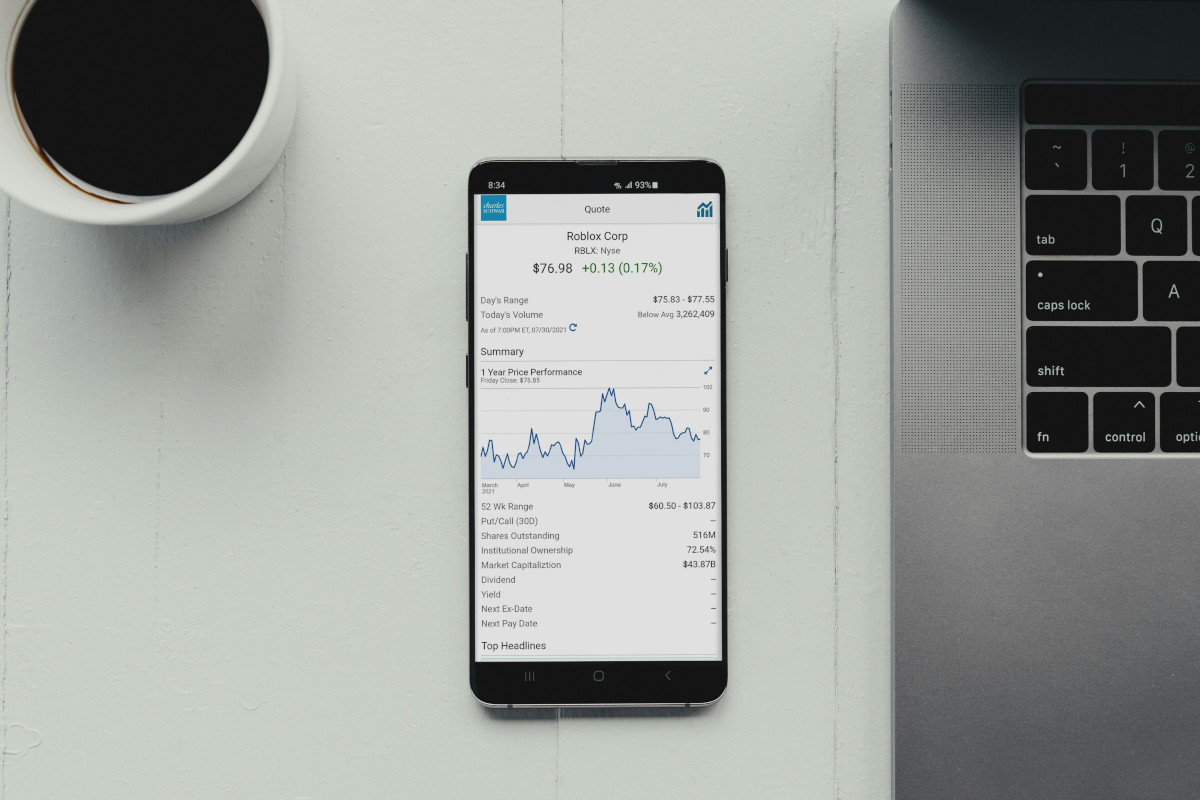Unlocking the potential of undervalued stocks is a proven path to investment success, offering the thrill of uncovering hidden market gems and the financial rewards that follow. The ability to consistently identify these opportunities can significantly enhance your portfolio’s performance.
That’s why we’ve put together this guide on how to find undervalued stocks to buy using both traditional methods of stock analysis alongside our innovative stock advisory app, which saves you time and stress while empowering you to win more trades.
We’ll also highlight some of the best current undervalued stocks thus far through 2024, pointing you in the right direction so you can hit the ground running. But first, let’s offer some context as to what makes a stock undervalued and why all this matters in the first place.
What Makes a Stock Undervalued?
An undervalued stock is one that trades below its intrinsic value, offering investors an opportunity to buy at a discount before the market corrects its price.
Recognizing these stocks hinges on a deep understanding of intrinsic value, financial metrics, and market sentiment. So, let’s take a step back and discuss the concept of intrinsic value to set the stage for the rest of our conversation.
Understanding Intrinsic Value
Intrinsic value is the true worth of a company, calculated through an assessment of its fundamentals, future cash flows, and overall financial health.
It’s the bedrock of the value investing basics, as it allows investors to compare the current market price with an estimated fair value, identifying potential bargains.
You can learn more about the difference between value investing vs growth investing in our blog – otherwise, let’s look at some of the key metrics that you’ll use to determine whether or not a stock is undervalued.
Key Financial Metrics and Ratios
Whereas you would use stock indicators to gauge a stock’s timing/trend, you’ll rely on financial metrics and ratios to assess a stock’s intrinsic value. Some of the most important are:
- Price-to-Earnings (P/E) Ratio: Compares a company’s share price to its earnings per share (EPS). A low P/E ratio may indicate an undervalued stock.
- Price-to-Book (P/B) Ratio: Evaluates a stock’s market value relative to its book value. Ratios under 1 can suggest a stock is undervalued.
- Price-to-Sales (P/S) Ratio: Offers insight by comparing stock price to revenue, with lower values potentially signaling undervaluation.
- Debt-to-Equity Ratio: Assesses a company’s financial leverage by comparing its total liabilities to shareholders’ equity. A lower ratio is often preferred.
- Free Cash Flow Analysis: Measures the cash a company generates after accounting for cash outflows. Robust free cash flow can be a sign of undervaluation.
Market Sentiment and Its Impact
Market sentiment can cause stocks to deviate from their intrinsic value. Investor emotions, news cycles, and market trends can lead to overreactions, resulting in undervaluation. Discerning investors monitor a market sentiment indicator to capitalize on mispriced stocks when the market’s mood swings.
We’ll talk about using this as part of your stock investment strategy shortly. But if you came here specifically wondering what some of the most undervalued stocks to buy today are, we’ll share a few examples below!
What Are Some Current Undervalued Stocks to Buy Now?
Keep in mind that the current undervalued stocks, by very definition, are constantly changing. A stock is undervalued until it isn’t – once enough investors drive a stock’s price up, it will eventually become fully valued or even overvalued.
We say this to remind you that learning how to find undervalued stocks to buy at any given time is far more important, as you’ll be able to keep your portfolio fresh and up-to-date. That being said, we’ve identified some of the most undervalued stocks worth investing in today:
- General Motors Company (GM): Currently priced at $39/share with a value of $48.56/share. This stock has good upside potential with an RV rating of 1.17. It also has a low price-to-sales ratio of 0.26 alongside a PE ratio of 5.00.
- United Airlines Holdings Inc (UAL): Currently priced at $43 compared to its intrinsic value of $64.18. This stock has excellent upside potential with an RV rating of 1.45. UAL has a solid PE ratio of 4.55 with a price-to-sales ratio of 0.26.
- Delta Air Lines, Inc. (DAL): Currently priced at $40.54 compared to its true value of $56.85. The stock shows very good upside potential with an RV rating of 1.38. Meanwhile, the PE ratio of 6.11 is solid, as is the price-to-sales ratio of 0.45.
- Wells Fargo (WFC): Currently priced at $51.75 compared to a current value of $65.95. The stock has a very good RV rating of 1.31, showing strong upside potential. It has a PE ratio of 10.54 alongside a price-to-sales ratio of 1.64.
- American Airlines Group Inc. (AAL): Currently priced at $14.67 compared to a current value of $25.71. The stock has excellent upside potential with an RV rating of 1.52. It’s also backed by a strong PE ratio of 7.20 and a price-to-sales ratio of 0.18.
You’ll notice we reference an RV rating in weighing the value for each of these stocks. This rating stands for relative value, and it’s one of the proprietary indicators used in our stock analysis software, VectorVest.
The system simplifies your approach to finding opportunities and executing trades using advanced algorithms that boil down complex technical and fundamental analysis into easy-to-interpret insights.
We’ll talk more about what the RV rating means and how you can use it to effortlessly uncover currently undervalued stocks shortly. For now, though, let’s talk about how to find undervalued stocks in general.
How to Find Undervalued Stocks to Buy
Ready to learn how to find undervalued stocks? We’ll start by showing you how to analyze stocks using either technical analysis vs fundamental analysis below – and then, we’ll introduce you to the best stock picker that can do all the hard work for you!
Utilizing Stock Screeners
Stock screeners are invaluable tools for investors looking to filter through thousands of stocks to find those that meet specific criteria.
By setting parameters that align with characteristics of undervalued stocks, such as low P/E ratios, high dividend yields, or strong earnings growth, investors can efficiently narrow down their search.
When using a stock screener, it’s essential to have a clear investment thesis and understand which metrics are most relevant to your strategy.
For instance, a value investor might focus on screening for stocks with low valuation multiples and stable earnings, while a growth-oriented investor may look for companies with high revenue growth rates. Meanwhile, a swing trading scanner would be centered on uncovering volatile stocks.
Fundamental Analysis Deep Dive
Fundamental analysis of stocks involves examining a company’s financial statements, management team, competitive advantages, and market position to assess its true value.
This process often begins with a review of the balance sheet, income statement, and cash flow statement to understand the company’s financial health and performance. We have a detailed guide on how to do fundamental analysis of stocks, but this is what you should be looking at:
- Earnings Quality: Assessing the sustainability and reliability of a company’s earnings.
- Revenue Growth: Evaluating the company’s sales trends over time.
- Profit Margins: Analyzing the efficiency of the company in turning revenue into profit.
- Return on Equity (ROE): Measuring how effectively management is using shareholders’ equity to generate profits.
- Debt Levels: Understanding the company’s debt obligations and its ability to service them.
Better yet, learn how to combine fundamental and technical analysis for the full scoop, as fundamental analysis only paints part of the picture. You need to make sure you’re entering and exiting your trades at the right time, after all.
Our blog has more resources if you’re interested in learning fundamental analysis, including insights on using a fundamental analysis tool to your advantage to streamline all this.
Comparative Analysis Within Industry
Comparing a company to its peers within the same industry can provide insights into its relative valuation. This involves looking at industry averages for various financial ratios and metrics to determine if a company is undervalued compared to its competitors. Consider these things:
- Industry-Specific Ratios: Certain industries have specific metrics that are important indicators of performance.
- Growth Prospects: How a company’s growth trajectory compares to its industry peers.
- Market Share: The company’s position in the industry and its competitive advantages.
The Importance of Economic Indicators
Economic indicators can have a significant impact on stock valuations. Interest rates, inflation, unemployment rates, and GDP growth are just a few macroeconomic factors that can influence investor sentiment and stock prices.
By staying informed about the broader economic environment, you can better gauge the potential risks and rewards associated with certain stocks.
Low-interest rates generally provide a favorable environment for stocks, as borrowing costs are lower and economic growth is typically stimulated. Conversely, rising interest rates can compress valuations and reduce the attractiveness of stocks.
Now, how does inflation affect the stock market? Moderate inflation can be a sign of a healthy economy, but high inflation may lead to increased costs for companies and squeezed profit margins. Stocks in sectors that can pass on inflationary costs to consumers may fare better in such environments.
Lower unemployment rates often indicate a strong economy, which can lead to higher consumer spending and corporate profits. However, extremely low unemployment can also signal potential inflationary pressures.
Gross Domestic Product (GDP) growth reflects the overall health of the economy. Strong GDP growth can signal a robust economic environment for businesses, while a declining GDP may indicate economic troubles ahead.
Incorporating these economic indicators into your analysis can provide a more comprehensive view of the potential impact on specific sectors or the stock market as a whole. But ultimately, learning how to uncover stocks that are undervalued can be much simpler when you leverage the best stock picker instead…
Effortlessly Uncover the Best Undervalued Stocks to Buy Now With VectorVest!
Wouldn’t it be nice if you could find the best undervalued stocks with the press of a button – without the need to conduct complex technical analysis or time-consuming fundamental analysis? With the best stock analysis app, you can!
VectorVest is a stock trading system that has outperformed the S&P 500 index by 10x over the past 20 years and counting. It saves you time and stress while empowering you to win more trades, all based on three simple ratings: relative value (RV), relative safety (RS), and relative timing (RT).
Relative value is going to be your bread and butter for uncovering current undervalued stocks. It’s a comparison of a stock’s long-term price appreciation potential (forecasted 3 years out), AAA corporate bond rates, and risk. It offers much better insight than a simple comparison of price to value alone.
Like the rest of the VST ratings, the RV rating sits on a simple scale of 0.00-2.00, with 1.00 being the average. Knowing this, interpreting the value of a stock couldn’t be any easier – pick stocks with ratings above the average!
But, actually finding stocks to analyze is simple too. We have a list of proprietary stock screeners that bring winning opportunities to your doorstep on a daily basis. You can even sort by the highest RV rating to find the most undervalued stocks to buy on any given day.
VectorVest isn’t just great for identifying stocks that are undervalued, though. You can use the system to find falling stocks to buy, good stocks for beginners, the best stocks for options trading, the best stocks to day trade, the best stocks to swing trade, and more!
Because you’re given a clear buy, sell, or hold recommendation for any given stock at any given time, you never have to wonder when to buy stocks or when to sell stocks, either. All things considered, it’s no wonder VectorVest has been considered the best stock research site on the market.
But don’t just take our word for it – get a free stock analysis and see what a difference our software can make in your investment strategy today!
Closing Thoughts on the Most Undervalued Stocks to Buy Today
That just about does it for our guide on how to find undervalued stocks to buy today. Identifying the most undervalued stocks is a multifaceted process that involves meticulous analysis of financial metrics, intrinsic value, industry comparisons, and economic indicators.
Our blog has more tips on building a stock portfolio and how to pick a stock, including what drives stock prices, investing in a down market, market timing, cutting losses, investing after retirement, best indicator for swing trading, how to live off dividends, best day of the week to buy stocks, swing trading vs day trading, buying the dip, and more.
By leveraging the techniques and tools we’ve shared today, you can uncover hidden gems in the market that may lead to significant returns. So, what are you waiting for?
Discover the power of informed investing with VectorVest’s comprehensive analysis app. Gain the confidence to make smarter investment choices and stay ahead of the market trends today!








Leave A Comment